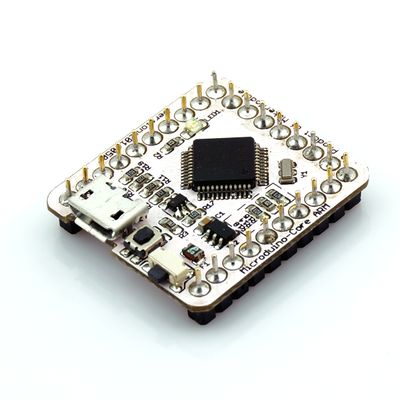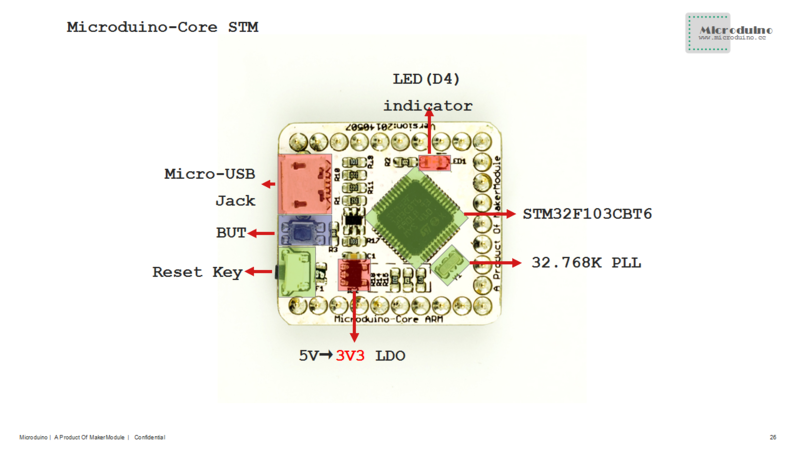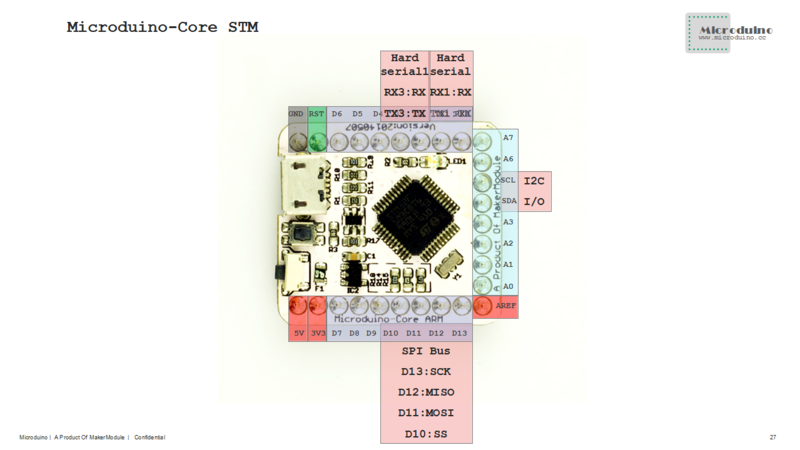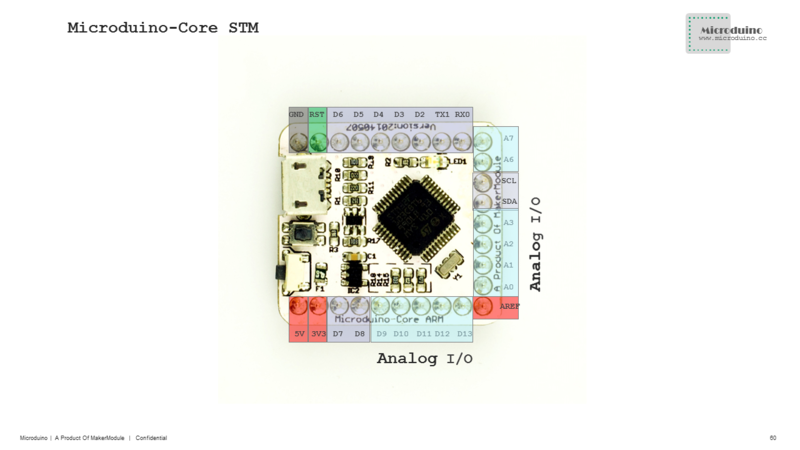Difference between revisions of "Microduino-Module CoreSTM32"
From Microduino Wiki
(→Electrical Specification) |
(→Program for Microduino-CoreSTM32) |
||
| Line 58: | Line 58: | ||
*Make sure installed the Microduino-CoreSTM32 derive | *Make sure installed the Microduino-CoreSTM32 derive | ||
| − | *Prepared | + | *Prepared hardware: Microduino-CoreSTM32, USB cable |
| − | *Prepared | + | *Prepared software: Maple IDE |
'''[[The beginning of Micoduino-CoreSTM32]]''' | '''[[The beginning of Micoduino-CoreSTM32]]''' | ||
Revision as of 10:12, 26 August 2016
| Language: | English • 中文 |
|---|
|
Microduino-CoreSTM32 is one of core modules of Microduino series, Microduino-CoreSTM32 is an open source hardware . It is an 32-bit ARM Cortex-M3 development board, based on STMicroelectronics' STM32F103CBT6 chip. It can be combined with other Microduino modules and used in more projects. Contents[hide]Features
|
SpecificationElectrical Specification
Pin Specification
0,1,2,3,4,5,6,7,8,9,10,11,12,13,14(A0),15(A1),16(A2),17(A3),18(SDA),19(SCL),20(A6),21(A7)
A0(ADC12_IN0), A1(ADC12_IN1), A2(ADC12_IN2), A3(ADC12_IN3), 10(ADC12_IN4), 13(ADC12_IN5), 12(ADC12_IN6), 11(ADC12_IN7), A6(ADC12_IN8), A7(ADC12_IN9)
DocumentsMicroduino- CoreSTM32 used components.
DevelopmentSet up the Microduino-CoreSTM32 development environment
Program for Microduino-CoreSTM32
The beginning of Micoduino-CoreSTM32 Burn the Microduino- CoreSTM32 BootLoader
ApplicaionHistoryPicture |



